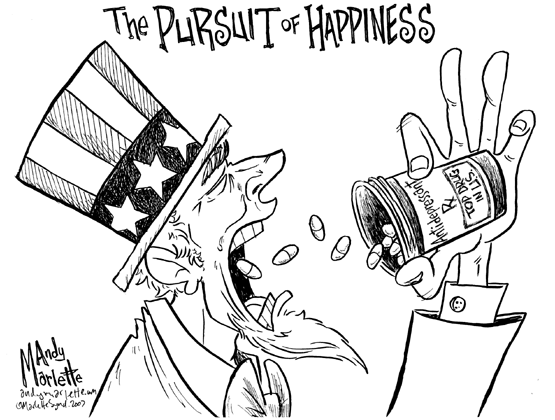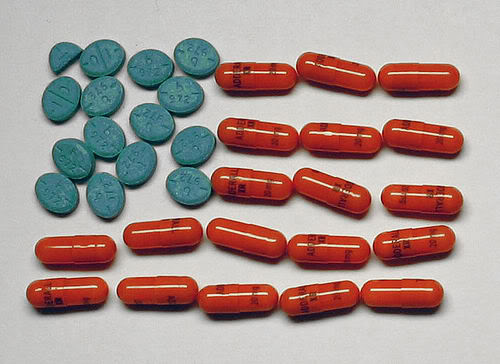Why Pharmaceuticals are Utilized
Pharmaceuticals are administered to healthy livestock for two main reasons. The first is to prevent the spread of diseases (Estabrook). Sickness runs rampant on meat farms and Concentrated Animal Feeding Operations (CAFOs) due to overcrowding and unsanitary practices (Estabrook). These farms also generate large quantities of manure, which is another carrier of diseases and illnesses.

The second reason is to increase the animals’ rate of growth. Pharmaceutically enhanced meat is thicker, denser and plumper than that of natural meat (Peterson). The escalated growth rate and size enable farms to sell more and larger quantities of meat (Peterson).
Public Health Impacts
But these drugs are responsible for other health effects aside from their intended use. The following are some of the implications this practice has on public health.
- Bacteria quickly evolve in the gut of livestock. Because of the overall improper use and overuse of drugs, this bacterium eventually become resistant to the pharmaceuticals ingested by the animal (Estabrook). These antibiotic and drug resistant bacteria strains, also known as superbugs, are transferred to the meat consumer (Estabrook). In turn, pharmaceutical drugs become less effective in treating illnesses across the human population (CDC).
Superbugs have been identified as “one of the world most pressing public health problems” (CDC). Every year, approximately two million people nation-wide catch a drug-resistant infection (NIH). When antibiotics do not work, people experience infections for longer periods of time and require more expensive medical help (CDC). About 23,000 of those two million cases result in death (NIH). Scientists have actually established a link between antibiotic use in animals and the loss of effectiveness of these drugs in human medicine (Consumers Union).
- These Superbugs can also infiltrate the kitchen and home of the consumer. Tests have shown the presence of anti-biotic microorganisms in market poultry (Consumers Union). Raw supermarket poultry can contaminate your kitchen in a variety of ways like placing the product on a cutting board or the presence of leaking packages in the refrigerator (Consumers Union). There is no direct evidence that implies being in the mere presence of superbug containing meat boosts an individual’s susceptibility to catching a particular illness (Consumers Union). Yet it’s worrisome to think that your own kitchen can be home to the same pathogens responsible for 23,000 deaths annually.
- Superbugs can be transmitted throughout the environment. Farm workers are likely to obtain the resistant bacteria and carry them elsewhere in the environment (Consumer Union). Resistant bacteria can also seep into the environment via manure (Consumers Union). Oftentimes, the manure, which contains the superbugs, originating from a CAFO, is administered as a fertilizer on fields (Consumers Union).
The manure can also enter bodies of water due to the farms’ and CAFOs’ unsanitary manure disposal practices. Wind and insects can further spread the reach of superbugs meaning higher rates of exposure among habitats and wild animals.
Work Cited
Estabrook, Barry. “You Want Superbugs With That?” Food & Health, Culture & Politics. On Earth: A Survival Guide for the Planet, 27 May 2011. Web. 11 Dec. 2015.
“Facts about Antibiotic Resistance.” Get Smart: Know When Antibiotics Work. Centers for Disease Control and Prevention, 17 Apr. 2015. Web. 12 Dec. 2015.
Peterson, Melody. “As Beef Cattle Become Behemoths, Who Are Animal Scientists Serving?” Opinions & Ideas. The Chronicle Review, 15 Apr. 2012. Web. 12 Dec. 2015.
“Stop the Spread of Superbugs: Help Fight Drug-Resistant Bacteria.” Features. NIH News in Health, Feb. 2014. Web. 12 Dec. 2015.
“The Overuse of Antibiotics in Food Animals Threatens Public Health.” Research. ConsumersUnio: Policy & Action from Consumer Reports, n.d. Web. 12 Dec. 2015.
Hyperlinks
Miller, Kevin. “Superbugs: What They Are and How You Get Them.” WebMD Health News. WebMD, 17 Apr. 2015. Web. 12 Dec. 2015.



